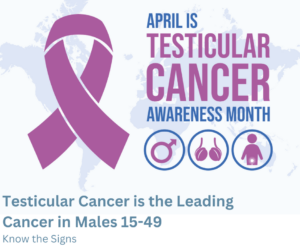Understanding Testicular Cancer: Symptoms, Risk Factors, and Early Detection
Testicular cancer is a relatively rare but important health concern for men. Despite its lower prevalence compared to other cancers, understanding its symptoms, risk factors, and the importance of early detection is crucial for improving outcomes.
Symptoms: The most common symptom of testicular cancer is a lump or swelling in one of the testicles. Other potential symptoms include pain or discomfort in the testicle or scrotum, changes in testicle size or shape, a feeling of heaviness in the scrotum, fluid accumulation in the scrotum, and back pain. It’s essential to note that not all men with testicular cancer will experience symptoms, especially in the early stages.
Risk Factors: Several factors may increase the risk of developing testicular cancer, including age (most common in younger men), family or personal history of testicular cancer, undescended testicles (cryptorchidism), HIV infection, and ethnicity (more common in white men). Understanding these risk factors can help individuals assess their susceptibility and take appropriate precautions.
Early Detection: Regular testicular self-exams are crucial for early detection of testicular cancer. By familiarizing themselves with the normal size, shape, and texture of their testicles, men can promptly identify any abnormalities and seek medical attention. Additionally, routine medical check-ups enable healthcare providers to conduct thorough physical examinations and screen for any signs of testicular cancer.
Testicular cancer may not be as widely discussed as other cancers, but awareness and early detection are paramount for successful treatment and improved outcomes.


